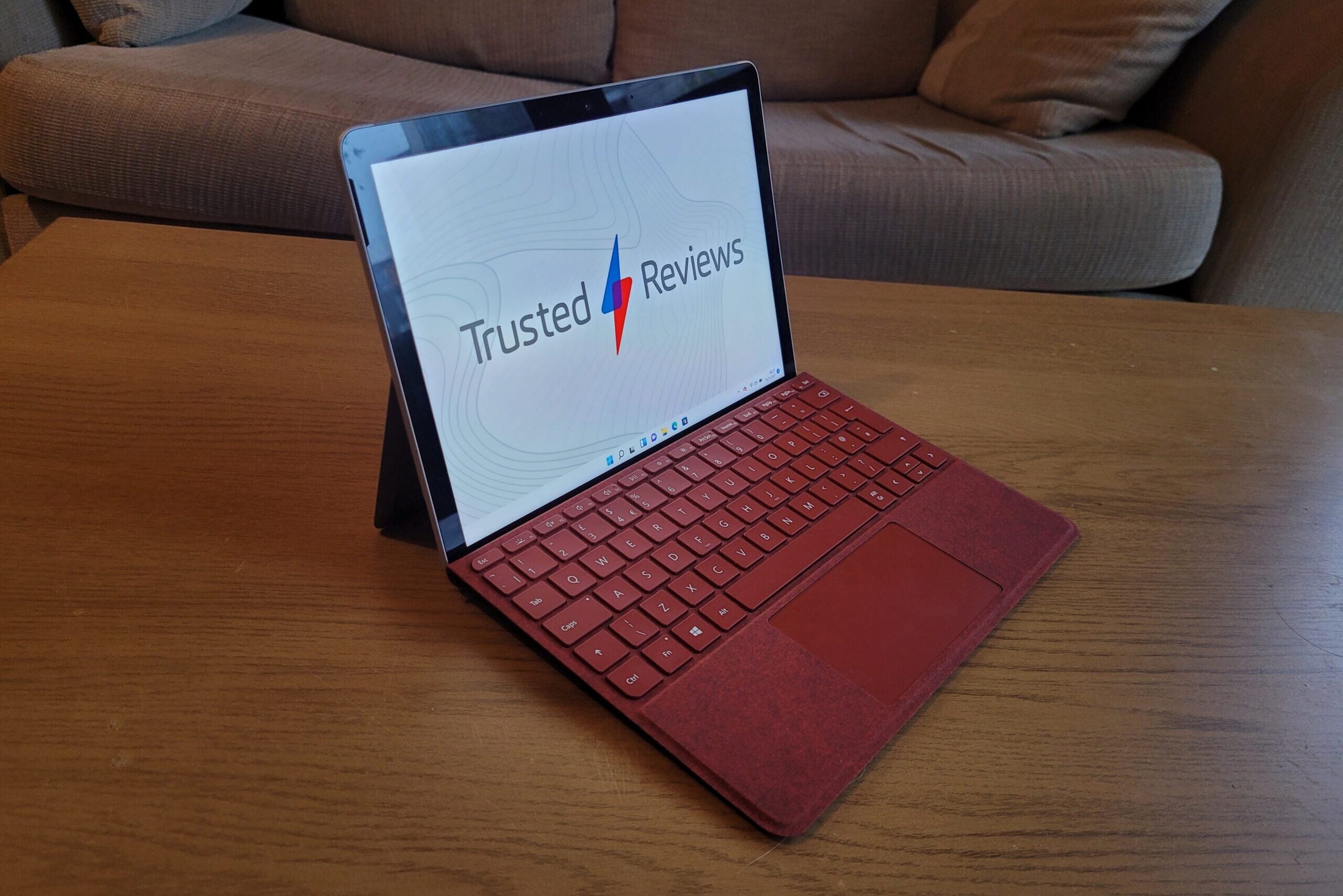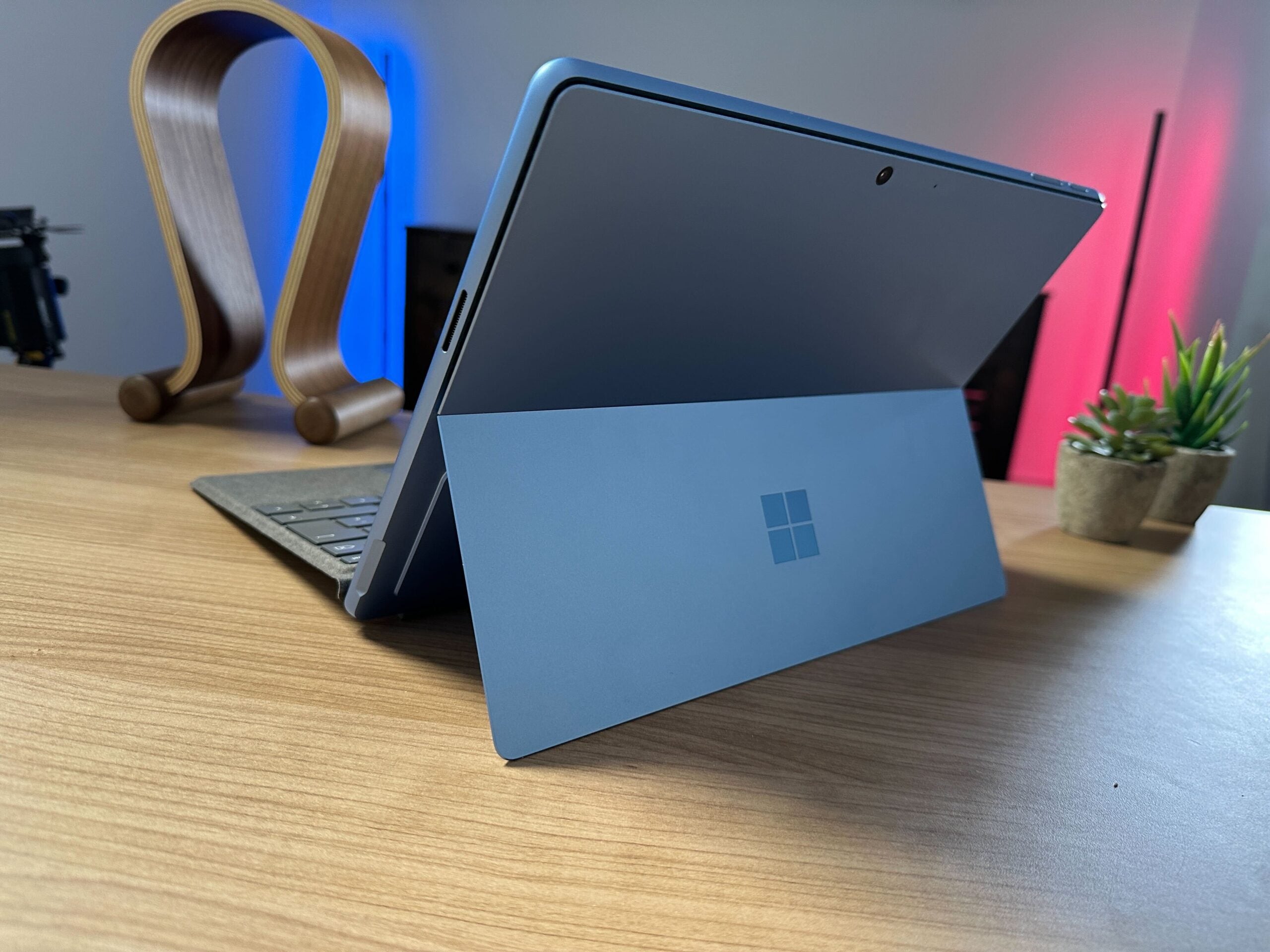Microsoft Surface Pro vs Surface Go: What’s the difference?

Microsoft’s Surface series is one of the most popular laptop ranges available, and is made up of devices in a variety of forms.
The Surface Pro series is arguably the most synonymous with the Microsoft brand, with a hybrid design allowing you to use it as both a tablet and laptop once you pair it with the Type Cover keyboard.
However, laptop buyers may be confused by the existence of the Surface Go, which seemingly shares the same design as the Surface Pro. So what’s the difference between the two, and which is the best option for you?
In this comparison guide, we’ll be comparing the two Surface ranges as a whole, rather than focusing on individual models. So if you want to know whether you should buy a Surface Pro or Surface Go, keep on reading for the full breakdown.
Price
The first thing to note is that the two Surface ranges occupy different price points. The Surface Go is pitched as Microsoft’s entry-level tablet. The Surface Go 3 launched back in 2023 with a starting price of $799.
Meanwhile, the Surface Pro is designed to be a more premium alternative, and therefore has a higher price. The Surface Pro 9 shipped with a base price of $999, which means there’s a $200 price difference between the two.
Controversially, both devices do not come bundled with the Type Cover by default, which is required to use the tablet as a laptop. The Surface Go Type Cover costs $129.99, while the Surface Pro Type Cover is even more expensive at $129.99.
Design and screen
The Microsoft Surface Pro and Surface Go share the same design concept, taking the form of a tablet that can attach to a magnetic keyboard. Both have a built-in kickstand that allows it to easily be propped up on a desk.


However, while the two devices look almost identical at first glance, there are few significant differences. Firstly, the Surface Pro is bigger, featuring a 13-inch touchscreen, whereas the Surface Go range is restricted to a 10.5-inch panel.
The Surface Pro also has a superior screen resolution (2880 X 1920) compared to the Surface Go (1920 x 1280), resulting in sharper picture quality. Current models of the Surface Pro use an LCD screen, just like the Surface Go, although rumours indicate that Microsoft could be upgrading to an OLED screen for the upcoming Surface Pro 10.


The Surface Go features a magnesium casing, with the weight coming in at 544g. The Surface Pro series is made up of aluminium instead, making it significantly heavier at 879g – although we found it to still be comfortably light enough to carry around easily.
Performance
The performance is the most important difference between these two tablets. The Surface Go offers an entry-level performance that’s only really suitable for basic tasks such as web browsing, sending emails and streaming video. Even having too many browser apps open simultaneously can see the Surface Go grind to a halt.
The Surface Pro range packs more powerful processors, generally in the Intel Core i5 and i7 ranges (although Qualcomm options are available too) which can handle any productivity workload, as well as more complex tasks. If you need a device fast enough to work on, you’ll most likely want the Surface Pro instead of its Go sibling.
The benchmark graph above highlights the significant performance between the Surface Go 3 and Surface Pro 9. In fact, the performance gap is so big that purchasing an older variant of the Pro series (such as the Surface Pro 7) will still get you far better performance than what the latest Surface Go 3 offers.
Battery life
The battery life will differ for each model in the Surface Pro and Surface Go ranges, so don’t expect the results to be consistent throughout each series.
That said, the Surface Pro has consistently outperformed its cheaper sibling in our battery tests. For the latest models, the Surface Pro 9 lasted close to 10 hours in our productivity benchmark test, while the Surface Go 3 could only last around 7 hours and 30 minutes on a single charge.
This is because Microsoft has fitted the Surface Go range with a smaller battery cell compared to the Surface Pro. This allows the Surface Go to be smaller and more portable, but could prove frustrating for those who like to work on the go.
Verdict
The Microsoft Surface Go and Surface Pro devices may look like similar devices, but they target very different audiences.
The Surface Go is best viewed as a lifestyle tablet, with just enough power for basic web browsing and video streaming. It’s not an ideal option for working, as the performance and battery life hold it back significantly, although the smaller design does make it more portable.
The Surface Pro range is far more ideal for work thanks to the more powerful performance and longer battery life. Even for lifestyle purposes, these upgrades may justify the price difference between the two ranges. And if the Surface Pro 10 rumours are to be believed, it could soon be upgraded with an OLED panel to make it even more enticing.








